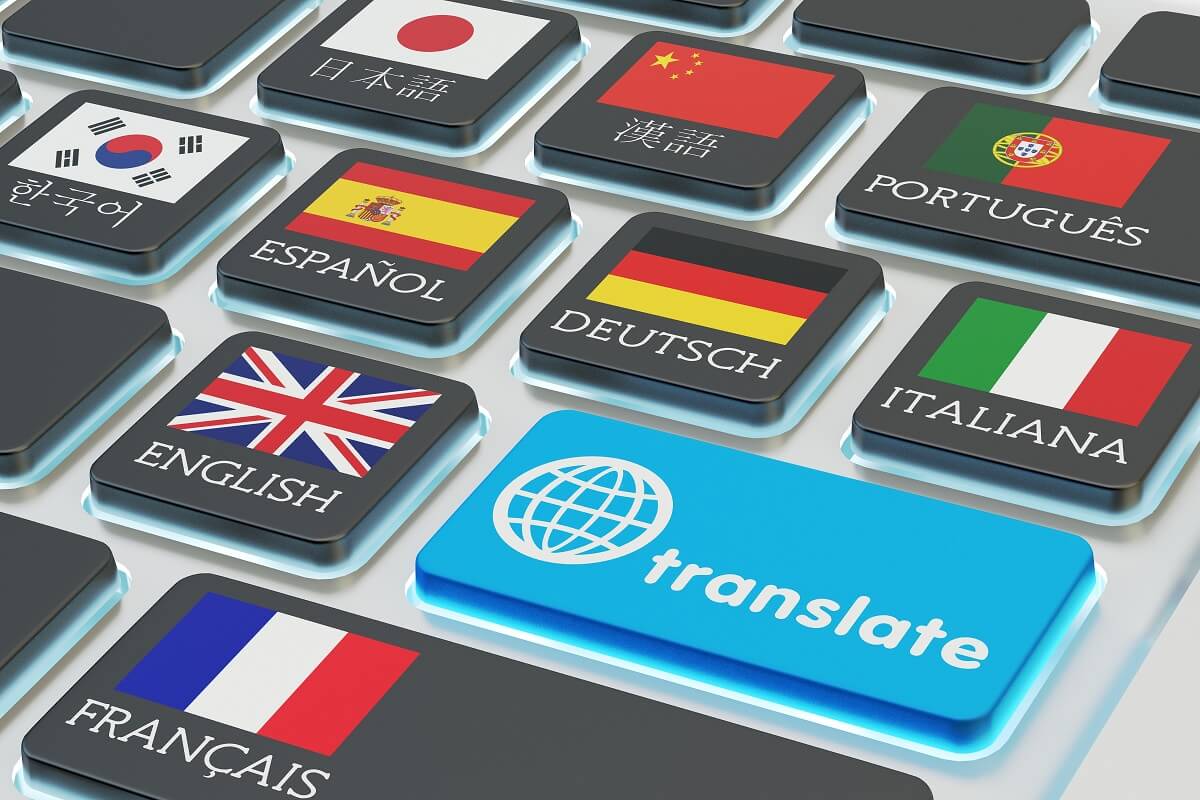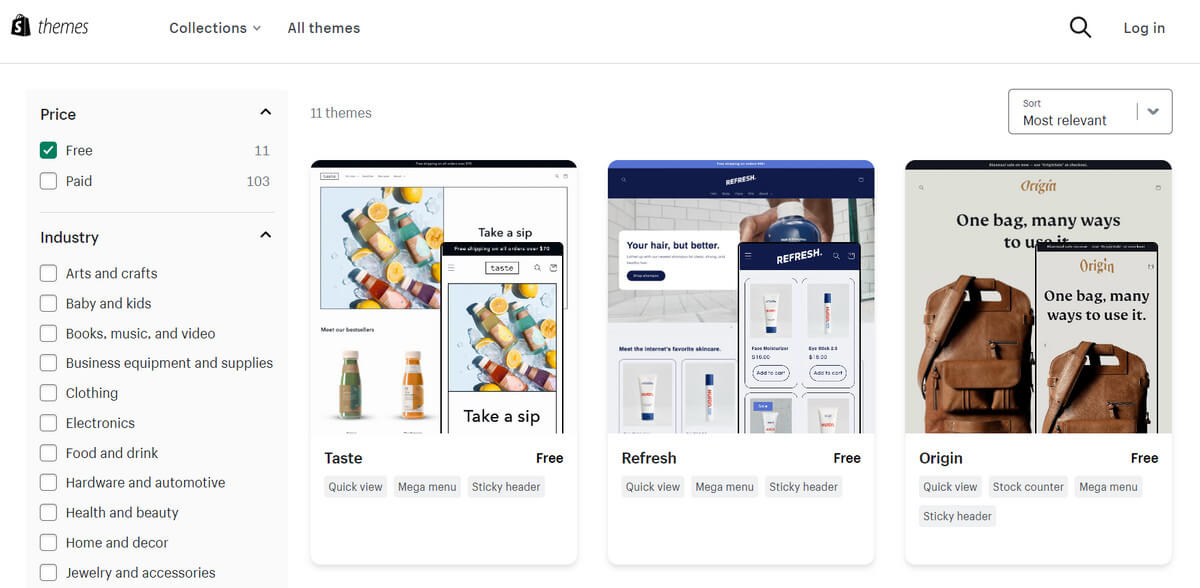Table of Contents
As many people are shopping online, Statista projects that by 2024, worldwide eCommerce sales will reach a total of $6.4 trillion. There are plenty of opportunities for online merchants yet challenges in the way of going global, one of which is the language barrier.
We can all agree that the best solution to this problem is running a multilingual store. Researchers have claimed that localizing content for all platforms is essential for success on a worldwide scale.
According to a CSA Research survey from 2020, 76% of online buyers prefer to make purchases in their mother tongue. Besides, 40% of them claim they would never make a purchase from a website in a different language.
Merchants will increase the appeal of their online stores to customers across the world by creating a Shopify multiple languages store. For this reason, we will walk you through some fundamental concepts related to making your store available in several languages and provide some suggestions on how to translate your Shopify store.
What is a multilingual store?
A multilingual store is a store that supports many languages and enables users to access the website’s content in their own language. Depending on the place where it is being utilized, content can be translated into the local tongue.
By opening a multilingual store, you will be able to draw in, hold the attention of, and hopefully convert your foreign visitors into customers. You will eventually achieve bigger success with a larger worldwide audience.
Benefits of a Shopify multi-language store
Now that you know what a Shopify multiple languages store looks like, you may be able to imagine how it can be helpful to the expansion of your business into the international markets.
To provide you with a clear picture of it, here are the common benefits when running a Shopify multi-language store.
1. Reach a larger audience base
There are over 4.66 billion active Internet users globally as of 2021, making the world more connected than ever. Nearly half of them engage in some kind of online purchasing. Therefore, you may want to develop a Shopify multilingual store that can attract thousands, and even millions, of online customers globally.
In addition, the need for a multilingual store is driven by the fact that over 75% of the world’s population is non-English speaking and that 72.4% of customers prefer to make purchases from a store that displays information in their local tongue.
By offering different Shopify language options in your store, you will improve the recognition of your brand internationally.
2. Boost conversions and sales
When a website is multilingual, visitors from other countries are less likely to abandon their journey on the website after understanding that the content is unavailable in their native tongue.
In fact, by localizing your website to their language, you can increase the likelihood that a customer will complete an online transaction by 3 times.
Hence, when you display your website in different languages, your sales may grow, and your bounce rate will decrease. It implies that the multilingual functionality will enable your website to reach some significant conversion rates.

Shopify multi language stores can boost conversion rates and sales
3. Polish SEO
Google is not always used as the default search engine in many countries. Instead, native language search engines are common because they are simple. Unless your website is multilingual, it won’t show up in those native-language search engines.
For better SEO, you should optimize your store by supporting several languages. Your visibility in various search engines increases threefold when you offer multilingual options on your website.
Additionally, having a multilingual website increases the value of your content, increasing organic traffic and search engine ranking when customers use their local languages to search for goods and services.
4. Increase engagement and satisfaction
For today’s consumers, personalization and enhanced experiences are crucial. You can increase customer satisfaction and engagement if you provide customers with what they need in their native tongues.
As soon as visitors get on your website, you want them to feel comfortable regardless of their problems, certain sorts of troubleshooting, a complaint, etc., and you want to ensure that they receive helpful and understandable support.
Foreign customers will have a better shopping experience when you offer assistance in their native tongues, and when a need or desire develops, they will make further purchases.
5. Nurture customer loyalty
Strengthening customer loyalty is one of the biggest advantages of a Shopify multiple languages website. According to statistics, 58% of companies that offered multilingual support had more devoted clients.
Indeed, people are more likely to feel at ease and trust brands that give them detailed information in a language they can comprehend. You want to make sure that their issues are understood, whether they are filing a complaint or requesting some basic troubleshooting.

Strengthening customer loyalty is one of the biggest advantages of a Shopify multiple languages website
You will encourage brand loyalty by catering to the unique requirements of your overseas prospects. By making their purchasing experience as simple as possible, you are demonstrating to them that they are important to your brand.
This can give you an advantage over rivals who might not be as ready to go above and beyond to make things simple for the customers that visit their Shopify stores.
Which elements of your website need translating?
After you have determined that you want a Shopify multiple languages store, you may need to decide which elements of the website need translating.
In fact, you don’t need to translate your entire site, but you might require translating more than you would expect. A Shopify multilingual website should translate the following elements:
- Product Descriptions: A decent product description is essential for assisting customers in their purchasing decisions. It offers them detailed information and a better understanding of the product. Additionally, it is good for your local SEO efforts.
- Help Centers/FAQs: Before customers make a purchase on your website, they could have several inquiries that need to be answered. They will have a better chance of finding what they need if the FAQs section is translated into their native tongues.
- Privacy Policy/Terms of Use: Online buyers are becoming more concerned about data privacy, therefore they might wish to review your site’s data usage rules before they make a purchase. For these buyers, it is beneficial if your data use policies are available in their native tongues.
Which languages to translate your website into?
Now, you must decide which languages to translate your online business into. All you need to do is look at the current data on your website to help with your decision.

You need to precisely decide which languages to translate your online business into
Pay attention to the countries that are seeing traffic but no sales generated. These markets have real potential for sales, so translating your website could help you reach customers there.
You will have a good notion of the languages you need for your multilingual website once you have selected which countries you want to sell in. Remember that certain countries may have many official languages.
In this situation, you might need to provide a variety of language options on your localized website for these markets.
For your convenience, let’s have a look at our tip to go global to find which languages to set up that can help you maximize your sales.
5 ways to create a Shopify multiple languages store
You will have several ways to make Shopify change the language of your online store. You can do that on your own or get support from a translator.
If you decide to utilize a translator, you will need to gather all the content from your website into one file, which could be in XML, HTML, CVS, or XLS format. Then, you can give everything to your translator at one time and start the translation process.
Build multiple Shopify stores
The first way to localize your store to global customers without a need for a translator is to build unique stores in the native language of each country or region in which you want to expand.
Instead of just converting your Shopify store into another language, you can now aim your SEO efforts toward locally relevant keywords in that language. Additionally, you can base each store’s ideal marketing plan on the languages and cultures of the area.
Choose a Shopify multilingual theme
It is possible to enable multilingual features in several Shopify themes. This is another way to make your Shopify store available in different languages without a translator.
You can access these features in all of Shopify’s free themes. However, if you are using themes from third parties, you may need to get in touch with the designers since certain third-party themes do not have this capability. You can ask them to find out if they are compatible.

It is possible to enable multilingual features in several Shopify themes
Besides, if you are using an outdated theme, you might need to update it to make Shopify multi-language options available.
Use automated translators
There are several options for a good translator out there. It can be suitable to translate your website utilizing an automated web-based translator like Google Translate, especially when you are a new merchant or on a small budget.
Nevertheless, you need to be cautious since these tools often just provide basic translation and are frequently very literal. In the best-case scenario, your translation will be simplified; in the worst-case scenario, it may contain errors that could harm your brand.
Hire translation specialists for Shopify multiple languages
For retailers who can afford to spend some money on translations, specialists can be a good option to build your Shopify multiple languages store. You can opt for a freelance translator or a translation agency.
Freelance translators frequently complete tasks effectively and affordably. Before you start, remember to verify that they are fluent in the languages they will be translating. It would be best if they had qualifications. And don’t forget to offer some instructions and best practices to assist in completing the translations exactly as you desire.

Specialists can be a good option to build your Shopify multiple languages store
Besides, language translation agencies are a great option for you, especially for any of your big projects. An agency can make sure you get high-quality translations finished promptly if you have a sizable eCommerce site or want translations in numerous Shopify languages. Additionally, they might provide more complete services, such as translations for SEO.
The only concern is that translating agencies are far more expensive than automatic or freelance translators.
Install Shopify translation apps
To create a Shopify multilingual shopping experience, third-party developers have created many Shopify translation applications and plugins. You can browse the selection of apps available in the Shopify App Store to assist you with translating your store.

Translation apps are the best way to ultimately translate the content of your Shopify multiple languages store
In our opinion, these translation apps are the best way to ultimately translate the content of your Shopify store. Thanks to them, you can avoid the hassles of running multiple Shopify stores, utilizing multiple themes, or going over your budget.
It is easy and quick to add several languages to your store with the help of translation apps. All you have to do is install your favorite app and add your target languages to your Shopify site. Then, the app will do the rest for you!
The guide to creating options for your Shopify multiple languages store
It is simple for retailers to translate their Shopify website thanks to Shopify’s multi-language options. All Shopify merchants can translate their stores into up to 5 different languages while Shopify Plus users can have up to 20. A country-specific URL will also be automatically generated for each language.
Simply download a translation app from the Shopify app store, and make sure your theme supports multiple languages and has a language selector. Then, from your dashboard, you can build and manage your Shopify multilingual store.
The steps below can be used to add a new language to create a Shopify multilingual store:
- Step 1: In your Shopify admin dashboard, select “Settings”
- Step 2: Choose “Languages”
- Step 3: Navigate to “Translated languages” -> Choose “Add Language”
- Step 4: Pick a language from the drop-down menu -> Click “Add”
- Step 5: Select “Visit Shopify App Store” -> Find and install a translation app, which will show you how to translate your website’s content and publish it in new languages
- Step 6: Choose “Preview” to see how different languages will appear in your online store. Both published and unpublished languages are available for preview
After adding your target Shopify language, you can follow the steps below to manage them:
- Step 1: In your Shopify admin dashboard, select “Settings”
- Step 2: Choose “Languages”
- Step 3: Select “Publish language” in the “Translated languages” section to make any of your languages visible on your website. Or select “Unpublish language” to remove a language. The option to delete all of the translated information from a language from your website is also available here
- Step 4: Click “Save”
Other factors of website localization you should consider
To be more effective, localization should be used on many levels of your Shopify multiple languages store. Simply translating your online store into another language is not enough. Instead, you’d better take into account every aspect of the local customer’s online shopping experience.
Thus, if you wish to translate your Shopify website, you must consider all of the below factors:
- Dates: Take into account the various date format conventions. If you wish to target American customers, you may want to attempt the American-style month-day-year format instead of the British-style day-month-year formatting for your dates. That will avoid any misunderstanding over sales and delivery dates.
- Currency: You can make sure that your prices are competitive in regional markets all across the world by using local currencies. Customers will make purchases more quickly as they don’t have to spend time converting prices.
- Measurements: The metric system of measuring is widely adopted. However, you should incorporate this in your website localization strategy, if you sell clothing and shoes, to attract buyers in countries that have different measurement systems.
- SEO: There may be different common search phrases than what you’re familiar with in different countries and languages. Customers in different countries might even turn to alternative search engines (for instance, Chinese buyers might choose Baidu over Google). Therefore, you should consider translating the keywords or other SEO elements to facilitate your website localization strategy.
- Design: You need to consider how various languages will appear on your Shopify multilingual store and whether various graphic elements are required in different countries. The overall design of your site may impact how customers perceive your brands.
In conclusion
Online merchants can profit from a multilingual website in numerous ways, but the major one is that it can boost sales by reaching more global customers. You can find many approaches that enable you to create a Shopify multiple languages store.
When considering website localization, there are many factors to consider, such as the Shopify language you want to employ and how to translate your Shopify store. You need to carefully analyze your visitor statistics and apply the appropriate technologies, regardless of your business size and products.
Now that you have everything you need, you can confidently engage with foreign customers everywhere in the world and create a truly international brand.


